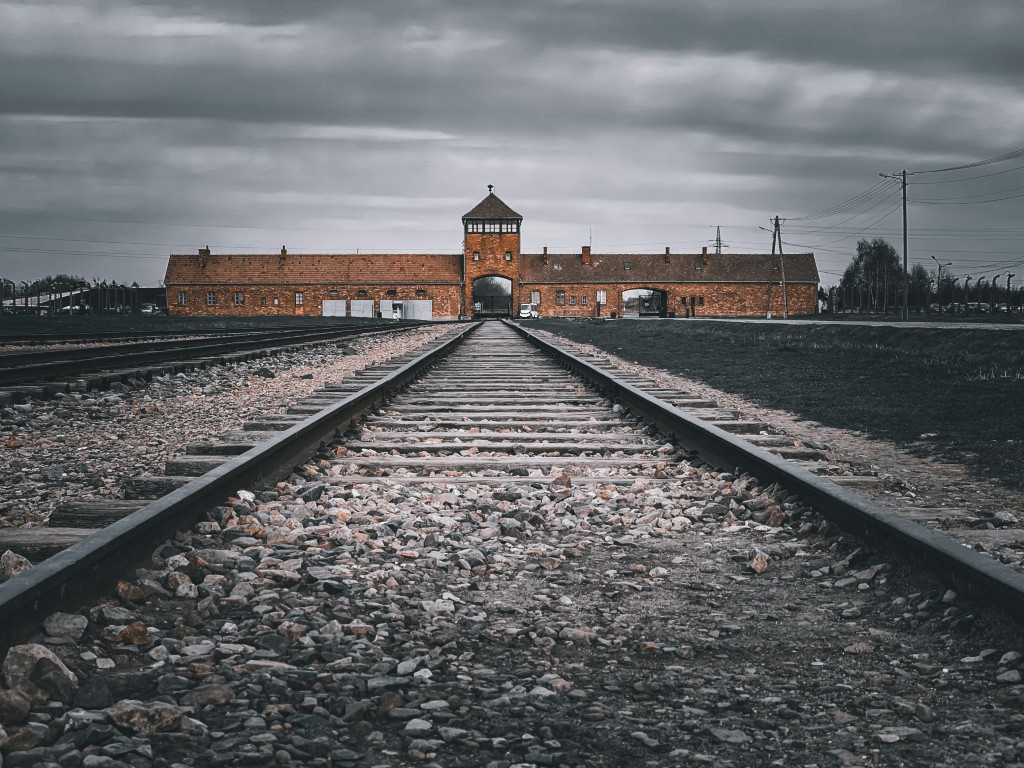Auschwitz-Birkenau, located in Oświęcim, Poland, is one of the most infamous symbols of the Holocaust. This concentration and extermination camp, established by Nazi Germany during World War II, was the site of the mass murder of over one million people, primarily Jews, but also Poles, Romani people, Soviet prisoners of war, and others persecuted by the Nazi regime. Today, it stands as a museum and a solemn reminder of the atrocities committed during the war.
History of Auschwitz-Birkenau
Auschwitz was established in 1940 in occupied Poland as a concentration camp for Polish political prisoners. As the Nazi war machine expanded, the camp evolved into a major extermination center. In 1941, Auschwitz II-Birkenau was constructed, greatly increasing the facility’s capacity for mass murder. Initially, Birkenau was built to accommodate Soviet prisoners of war and other detainees, but it quickly became the primary site for the “Final Solution,” Nazi Germany’s plan to exterminate the Jewish population. The camp featured vast networks of barracks, watchtowers, and electrified fences, ensuring strict control over prisoners. Trains carrying victims from all across Nazi-occupied Europe arrived daily, with most of the passengers being sent directly to the gas chambers. The camp also became a site for brutal medical experiments conducted by SS doctors, including Josef Mengele, who performed inhumane procedures on prisoners. Starvation, forced labor, and disease were rampant, further contributing to the death toll. Despite the overwhelming suffering, some prisoners organized resistance movements and escape attempts, though very few succeeded. The camp was liberated by Soviet forces on January 27, 1945, revealing the horrifying extent of Nazi crimes to the world.

Structure and Operations
Auschwitz-Birkenau was a vast complex consisting of three main camps:
- Auschwitz I – The original camp, which housed political prisoners and administrative buildings. The infamous “Arbeit macht frei” (“Work sets you free”) sign stood at its entrance.
- Auschwitz II-Birkenau – The largest section, built specifically for mass extermination. It contained gas chambers and crematoria, as well as barracks where prisoners were held in inhumane conditions.
- Auschwitz III-Monowitz – A labor camp where prisoners were forced to work for German industrial companies.
The majority of victims perished in Auschwitz II-Birkenau, where systematic extermination was carried out in gas chambers using Zyklon B. Those who were not immediately killed often died from starvation, forced labor, disease, or brutal treatment by guards.
The victims of Auschwitz-Birkenau came from all across Europe, transported in horrific conditions via overcrowded trains. Upon arrival, many were subjected to selection processes, where the weak, elderly, pregnant women, and children were often sent directly to the gas chambers. The estimated number of people murdered at Auschwitz exceeds 1.1 million, with the majority being Jewish men, women, and children. Many others, including Polish resistance members, Romani people, Soviet prisoners of war, and Jehovah’s Witnesses, also faced systematic execution or perished due to inhumane conditions. The selections were carried out by SS officers, who decided within moments whether individuals would be sent to forced labor or death. Those chosen for execution were often deceived into believing they were being sent to showers before being led into gas chambers. Inside, victims were exposed to lethal doses of Zyklon B gas, leading to mass suffocation. The belongings of those murdered, including clothing, shoes, gold teeth, and even hair, were collected and repurposed by the Nazis. The scale of suffering and loss at Auschwitz remains one of the darkest chapters in human history, serving as a powerful reminder of the dangers of hatred and totalitarian ideology.

Liberation and Aftermath
On January 27, 1945, Soviet forces liberated Auschwitz, finding around 7,000 surviving prisoners. Many were too weak to move, suffering from severe malnutrition and disease. The discovery of the camp and its horrors shocked the world and provided undeniable evidence of the Holocaust. The Soviet troops encountered piles of unburied corpses, warehouses filled with personal belongings of victims, and the remnants of the gas chambers that the Nazis had attempted to destroy before fleeing. Survivors, many of whom had lost entire families, struggled to regain their health and rebuild their lives in the aftermath of unimaginable trauma. The liberation of Auschwitz became a defining moment in world history, reinforcing the necessity of remembering the atrocities committed and ensuring that such crimes are never repeated.
Auschwitz-Birkenau as a Memorial Site
After the war, Auschwitz-Birkenau was preserved as a historical site and museum. It was designated a UNESCO World Heritage Site in 1979. Today, visitors from around the world come to pay their respects and learn about the atrocities committed there. The museum preserves personal belongings, documents, and remains of the gas chambers to educate future generations.
If you are a guest at Krakow For You Apartments, right next to the Main Market Square, we can organize a tour for you to visit the Auschwitz-Birkenau Museum, providing an opportunity to learn more about this significant historical site.
Auschwitz-Birkenau remains one of the most powerful symbols of the Holocaust, reminding humanity of the consequences of hatred, discrimination, and unchecked power. Its preservation ensures that the memories of its victims are honored and that the lessons of history continue to be taught for generations to come.

